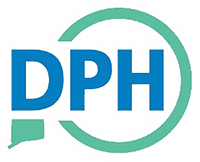NEW HAVEN, Conn. – The State Mosquito Management Program is advising Connecticut residents about the continued risk of eastern equine encephalitis (EEE) infection this season. So far EEE-infected mosquitoes have been reported in: Canterbury, Chester, Farmington, Griswold, Groton, Killingworth, Ledyard, Lyme, Manchester, Newtown, North Stonington, Plainfield, Sterling, Stonington, Trumbull, and Voluntown. Although no human cases have been reported so far this season in Connecticut, human cases usually lag behind virus detections in mosquitoes due to the time it takes for a person to develop disease and confirm the diagnosis.
"Although mosquito numbers are declining with the onset of cool weather, we continue to detect EEE virus, some of which are being found in new communities in Connecticut,” said John Shepard, Medical Entomologist at the Connecticut Agricultural Experiment Station (CAES). “There is continued risk for mosquito-borne diseases until the first hard freeze when mosquito activity ends."
“Mosquitoes are still active, and residents should continue to take measures to prevent mosquito bites especially during episodes of warmer weather” said Dr. Philip Armstrong, Chief Scientist at CAES. "This includes applying insect repellent and covering bare skin, especially in wooded areas and during dusk and dawn when biting mosquitoes are most active.”
“Since there is no vaccine for EEE for use in humans, protection from this virus depends on personal protective measures to decrease exposure to infected mosquitoes,” said Connecticut Department of Public Health Commissioner Manisha Juthani, MD. “Symptoms from EEE include severe headache and neck stiffness which can result in nausea, vomiting, and dehydration. Anyone experiencing these symptoms should seek medical attention immediately.”
“DEEP encourages residents to continue to take appropriate precautions as we are still not through the mosquito season,” said DEEP Commissioner Katie Dykes. “Residents taking part in outdoor fall activities such as hiking, fishing, and camping should continue to take steps to avoid exposure to mosquitoes, including minimizing time outdoors during dawn and dusk when mosquitoes are prevalent, wearing long-sleeved shirts and pants, and using insect repellent if out at any point during those times.
To reduce the risk of being bitten by mosquitoes, residents should:
- Minimize time spent outdoors between dusk and dawn when mosquitoes are most active.
- When it is necessary to be outdoors, use mosquito repellents containing an EPA-registered active ingredient, including DEET, Picaridin, IR3535, oil of lemon eucalyptus, para-menthane-diol (PMD), or 2-undecanone. EPA registration of skin-applied repellent products indicates that they have been evaluated and approved for human safety and effectiveness when applied according to instructions on the label.
- Wear shoes, socks, long pants, and a long-sleeved shirt when outdoors for long periods of time, or when mosquitoes are more active. Clothing should be light-colored and loose-fitting and made of tightly woven materials that keep mosquitoes away from the skin.
- Wear clothing and gear treated with permethrin. Permethrin is an insecticide that kills or repels mosquitoes and ticks.
- Be sure door and window screens are tight-fitting and in good repair.
- When sleeping outdoors, use tents or mosquito netting in an unscreened structure. Treat camping gear with permethrin when possible.
- Cover strollers and baby carriers with mosquito nets when outside.
EEE is a rare but serious illness in humans with 4-8 cases reported in a typical year in the U.S. To date this season, 13 human cases have been reported in seven states including Massachusetts (4), New Hampshire (4), Vermont (1), New York (1), Rhode Island (1), New Jersey (1), and Wisconsin (1); two of these were fatal. EEE is the most severe mosquito-transmitted disease in the U.S. with approximately 40 percent mortality and significant brain damage in half of survivors.
Connecticut Mosquito Management Program
The response to mosquito transmitted diseases in Connecticut is a collaborative inter-agency effort involving the Department of Energy and Environmental Protection (DEEP), The Connecticut Agricultural Experiment Station (CAES), the Department of Public Health (DPH), the Department of Agriculture, and the Department of Pathobiology at the University of Connecticut (UCONN). These agencies are responsible for monitoring mosquito populations and the potential public health threat of mosquito-borne diseases.
The CAES maintains a network of 108 mosquito-trapping stations in 88 municipalities throughout the state. CAES begins mosquito trapping and testing in June and continues into October. Positive findings are reported to local health departments and on the CAES website at https://portal.ct.gov/caes.
For information on EEE, WNV and other mosquito-borne diseases, what can be done to prevent getting bitten by mosquitoes, the latest mosquito test results, and human infections, visit the Connecticut Mosquito Management Program web site at https://portal.ct.gov/mosquito.
###


